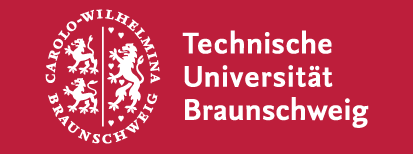Fundamentals of turbulence modeling
introduction
Andre Weiner, Institute of Fluid Mechanics
Outline
- course organization
- course overview
- turbulent flows
- turbulence modeling
- fluid flow equations
course organization
workload and requirements
- 5CP, 150h workload
- 13 lectures (90min), 13 exercise sessions (60min)
- $150h - 13\times 2.5h = 117.5h$ self-study
- written exam, 90min
- expected prior knowledge
- computational fluid dynamics
- programming (in Python)
resources and communication
- slides and exercises available on GitHub
- suggested reading list (StudIP/data)
- all resources are updated weekly
- lectures and exercises are recorded
- technical support via GitHub issues
- general communication via email, StudIP
exercise time slot options
- Tuesdays, 4-5pm (original)
- Tuesdays, 1-2pm (suggestion)
lecture and exercise on April 25 (next week)
- recorded lecture/exercise
- alternative appointments
- after final lecture (July 25)
- Doodle poll
recipe for issue reporting
- go to the Github repository
- click on Issues (top left)
- use the search to check if a similar
issue has been reported already - if not, open a New issue (top left)
- write the report and click on Submit new issue

an issue with issues
how to report properly
- precise title
Incorrect transport equation lecture 2 slides - short description
Comparing the formulas between ... and ..., I found an inconsistency. - precise problem description
The formula reads ... in the script and ... on the slides.
additional (optional) tips
- expected behavior
I expected a 3x2 tensor but got a 2x3 tensor. - suggestion for correction
I believe the correct formula is $\mathbf{XQ}=\mathbf{Q\Lambda}$. - link related issues using #issue_number
The problem might be related to issue #6. - provide details about your setup
I am running Ubuntu 20.04 using WSL.
see also: 45 Github Issues Dos and Don't
course overview
refer to the GitHub repository
turbulent flows
source: F. X. Trias et al. (link)
Properties of turbulent flows:
source: J. H. Lee et al. (link)
source: Michal Choma (link)
Turbulence is not a well-defined problem awaiting solution but is a state of motion with innumerable different facets which depend on the context in which it occurs. We do not regard the state of laminar flow as a single problem; much less should turbulence be thought of as a single problem. The properties of turbulence are flow dependent, and therein lies the difficulty. Each turbulent flow field which is studied reveals new aspects of turbulence, and we are a very long way from being able to assemble a comprehensive physical description of this many-sided state of motion.
G. K. Batchelor in J. Fröhlich:
LES turbulenter Strömungen (p. 1)
turbulence modeling
Do we really need turbulence modeling?
What do we expect from a turbulence model?
... an ideal model should introduce the minimum amount of complexity while capturing the essence of the relevant physics.
D. C. Wilcox:
Turbulence modeling for CFD (p. 2)
What do we expect from a turbulence model?
- accurate:
- generalizable:
- tested and validated:
- efficient:
- robust:
- transparent:
most common modeling approaches
- Reynolds-averaged Navier Stokes (RANS):
attempt to predict mean flow quantities directly - Large eddy simulation (LES):
resolve largest scales, model small scales - hybrid RANS-LES
dedicated zones for LES and RANS
source: Martin Petry (link)
modeling complexity vs. efficiency
fluid flow equations
conservation of mass
- Cartesian coordinates $$ \frac{\partial \rho}{\partial t} + \frac{\partial \rho u}{\partial x} + \frac{\partial \rho v}{\partial y} + \frac{\partial \rho w}{\partial z} = 0$$
- vector notation $$ \frac{\partial \rho}{\partial t} + \nabla\cdot \left(\rho\mathbf{u}\right) = 0$$
$\mathbf{x} = (x, y, z)^T$, $\mathbf{u} = (u, v, w)^T$
- index notation $$\frac{\partial \rho}{\partial t} + \frac{\partial \rho u_i}{\partial x_i} = 0$$
- another alternative $$\frac{\partial \rho}{\partial t} + \mathrm{div}(\rho\mathbf{u}) = 0$$
compressibility condition
$$\frac{\mathrm{D}\rho}{\mathrm{D}t} = \frac{\partial \rho}{\partial t} + \mathbf{u}\cdot \nabla\rho = 0$$
$\begin{aligned} \frac{\partial \rho}{\partial t} + \nabla\cdot \left(\rho\mathbf{u}\right) &= \frac{\partial \rho}{\partial t} + \mathbf{u}\cdot\nabla\rho + \rho\nabla\cdot\mathbf{u}\\ &= \frac{\mathrm{D}\rho}{\mathrm{D}} + \rho\nabla\cdot\mathbf{u} \end{aligned}$
$$\rho\nabla\cdot\mathbf{u} = 0 \rightarrow \nabla\cdot\mathbf{u} = 0$$
conservation of momentum $$\frac{\partial \rho\mathbf{u}}{\partial t} + \nabla\cdot\left(\rho\mathbf{uu}\right) = \mathbf{f}$$
$$\mathbf{f} = \mathbf{f}_s + \mathbf{f}_b$$ external forces = surface forces + body forces
surface forces $$\mathbf{f}_s = \nabla\cdot \mathbf{S}$$
(total) stress tensor $$\mathbf{S} = \underbrace{-p\mathbf{I}}_{\text{pressure}} + \underbrace{\mathbf{\tau}}_{\text{viscous}}$$
$$p=-\mathrm{tr}(\mathbf{S})$$
gravitational body forces $$\mathbf{f}_b = \rho\mathbf{g}$$
$\mathbf{g}$ - gravitational acceleration vector
momentum equation with forces $$\frac{\partial \rho\mathbf{u}}{\partial t} + \nabla\cdot\left(\rho\mathbf{uu}\right) = -\nabla p + \nabla\cdot\mathbf{\tau} + \rho\mathbf{g}$$
Newtonian fluids $$\mathbf{\tau} = \mu \underbrace{\left(\nabla\mathbf{u} + (\nabla\mathbf{u})^T\right)}_{\text{strain rate}} + \lambda (\nabla\cdot \mathbf{u})\mathbf{I}$$
$\mu$ - dynamic viscosity, $\lambda = -2/3\mu$ - bulk viscosity
final (incompressible) form
$$\frac{\partial \rho\mathbf{u}}{\partial t} + \nabla\cdot\left(\rho\mathbf{uu}\right) = -\nabla
p + \nabla\cdot \left[\mu \left(\nabla\mathbf{u} + (\nabla\mathbf{u})^T\right)\right] +
\rho\mathbf{g}$$
constant density
$$\frac{\partial \mathbf{u}}{\partial t} + \nabla\cdot\left(\mathbf{uu}\right) = -\nabla
\tilde{p} + \nabla\cdot \left[\nu \left(\nabla\mathbf{u} + (\nabla\mathbf{u})^T\right)\right] +
\mathbf{g}$$
$\tilde{p} = p/\rho$ - kinematic pressure, $\nu = \mu/\rho$ - kinematic viscosity
summary
- turbulence is hard to define
- the resolution of all turbulent scales is typically infeasible or impossible (and not wanted)
- the modeling of turbulence is essential for most applications of interest
- good turbulence models capture the essential physics with a minimum of complexity
- the most common modeling approaches are RANS, LES, hybrid RANS-LES

